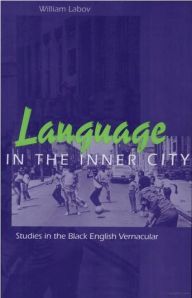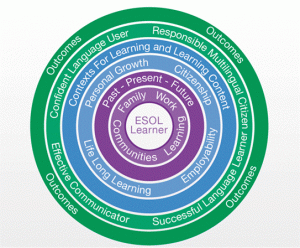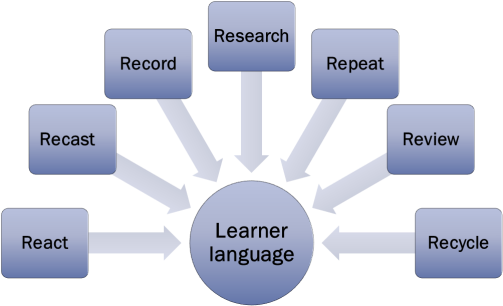 Having not taken part in an ELTchat for a while, nor even having been very active on Twitter recently, I was glad that one of James Taylor’s tweets on book clubs caught my eye and drew me in to the discussion on the benefits and use of graded readers. This post is a summary of the chat.
Having not taken part in an ELTchat for a while, nor even having been very active on Twitter recently, I was glad that one of James Taylor’s tweets on book clubs caught my eye and drew me in to the discussion on the benefits and use of graded readers. This post is a summary of the chat.
I’ve long been a fan of extensive reading for language development. Research, personal experience and feedback from learners continue to convince me that it’s a good thing to do. Graded readers make extensive reading accessible to more learners and the benefits of using them seemed clear to those taking part in the chat. Marisa has noticed great improvement overall when she has used a class reader over a number of lessons. Hana felt that reading helped to extend vocabulary in “the most natural way.” Other participants have found that students starting at a low level of reader can progress up through the levels to ungraded texts.
Getting everyone to read, however, is not easy and some people expressed reservations about ‘forcing’ reluctant learners to read. Rather than forcing people to read though, it was suggested that teachers work to encourage and motivate people by providing choice, support and enjoyable and useful classroom activities around reading and graded readers.
Many chat participants were enthusiastic about extensive reading and using graded readers and were keen to pass this on to learners. James tweeted, “ask my students if I think that reading is important… #neverstopsmentioningit”. There’s probably a fine line between encouraging and nagging (and it’s one I often cross… apparently!) but reluctant readers can come to find reading graded readers useful and enjoyable. People who may not have read much in their first language, find that the first book they finish is a graded reader. Vedrana told us how students tell her that “they haven’t read a book since university” but that those “who get into borrowing readers regularly are often thrilled to be reading again!”
The range of abilities and interests of our students means that it’s difficult to find a book that all students find interesting. Similarly, we may often only have one copy of each book. The more choice that we can offer, the more chance there will be something that students enjoy reading and as Marisa pointed out, reading for pleasure is a great habit to encourage, referring us to Stephen Krashen’s talk on language acquisition through compelling readings. Hana’s students were enjoying a new graded reader of ghost stories, while detective stories were popular with Vedrana’s. LeedsAcademy had found interactive fiction where you choose your own ending to be very popular with students. Learners can also be directed towards short stories, articles and as well as non-graded books and texts eventually.
Many chat participants had a selection of readers – a book box or a library shelf or two. Building a collection of books was discussed. Where funding is available, students can be involved in choosing which books to buy from a brochure or online publisher catalogue. An initial personal investment in a few books, and using them for good project work, helped to persuade LeedsAcademy’s DOS in Thailand to buy 40 titles! If there is no funding available, students could agree to buy one or two books each and swap them or students could pay a small fee each time to replenish stocks. Books are increasingly available free online, including graded readers, on library sites and sites such as Project Guttenberg. Some graded readers are more interesting than others and ones written for the language learner, rather than those which are simplified and abridged versions of existing books, are perhaps more engaging. Another option mentioned was to make your own graded reader by simplifying – both challenging and time consuming.
So we can encourage and provide choice, but not all students will be motivated to read on their own and, as a couple of ELT chatters agreed, if they “leave it up to students, they won’t get much out of them”. Time in class can usefully be spent using graded readers to encourage extensive reading for pleasure and for language development. Many activities were suggested.
- One student at the board writing new vocabulary. Other students listen and follow if there are enough copies.
- Students can make a personal list of vocabulary and then share with a partner, each explaining items that weren’t problems for them. Then change partners a few times, ending up with a common list of new vocabulary.
- An information gap activity: each student reads one chapter and then tells others about it.
- Ask all students to choose a book, read chapter one in class and then tell each other whether it’s good or not.
- Use short texts for pre-reading activities for the longer text students read at home.
- Students read at home and come back to class with 3-4 new words to share and recycle as a class.
- Read a chapter and predict what will happen. Invent the story as a class.
- Read to learners, particularly young learners, as an introduction to literacy.
- Use class readers as a springboard for discussion and writing.
- Students write letters to or from characters, characters’ journals etc.
- Students write a profile of their favourite character and why they like them.
- Role play scenes from books and add missing dialogue.
- Students write a review of a book.
- Students make a front page of the local newspaper.
- Students draw a character from a book before watching the film version.
- Students compare the book and the film.
- More advanced students compare the simplified version of a book to the original.
- Guessing activities. Who’s the author? Male or female? Chapter titles? Ending?
- Students suggest a continuation or a sequel to a story.
- Stop reading at a crucial point and offer a character advice, “If I were him, I’d… “
- Students each write a question about the book and then have a class quiz using all of their questions.
- Graded readers can be given to learners who have finished an activity before others.
Marisa suggested starting a reading circle. Once a fortnight, learners can talk about and review what they’ve read. LeedsAcademy has found the resources available on the OUP site useful for this. These resources help to structure the reading circle. We can also, as James suggested, simply hold more relaxed informal book club sessions. This is something I’ve enjoyed doing with learners and wrote about it in an earlier post and Mike reminded us of Jez Uden’s work with EFL Reading in Cafes.
Other links that were posted during the chat:
- The Rocking Horse Winner – Some old and some newer ideas for activities around a short story.
- OUP Bookworms Club Reading Circles
- Simply Cracking Good Stories – Creating new engaging and accessible adult fiction for low-literate immigrant adults.
- EFL Shorts – Short stories for EFL learners.
- Vocab Profile Tool for analysing text complexity.
I enjoyed my first ELTchat in a long time and will try to make them more often. Thanks to everyone who took part and shared so many ideas and resources. The transcript of the chat can be found here.



 One of my favourite ways of capturing and recording language while working with small groups of up to about six language learners is on little pieces of paper. When these pieces of paper have featured in some of my posts, people have remarked on their use and, consequently, I’ve become more aware of how I use them and thought I’d try to write about them in a bit more detail. While possibly too simple a thing to write about, I’ve found them to be a very efficient, flexible and satisfying way to work with learners and their language. So, this is a this-works-well-for-me-it-might-for-you kind of post.
One of my favourite ways of capturing and recording language while working with small groups of up to about six language learners is on little pieces of paper. When these pieces of paper have featured in some of my posts, people have remarked on their use and, consequently, I’ve become more aware of how I use them and thought I’d try to write about them in a bit more detail. While possibly too simple a thing to write about, I’ve found them to be a very efficient, flexible and satisfying way to work with learners and their language. So, this is a this-works-well-for-me-it-might-for-you kind of post.

